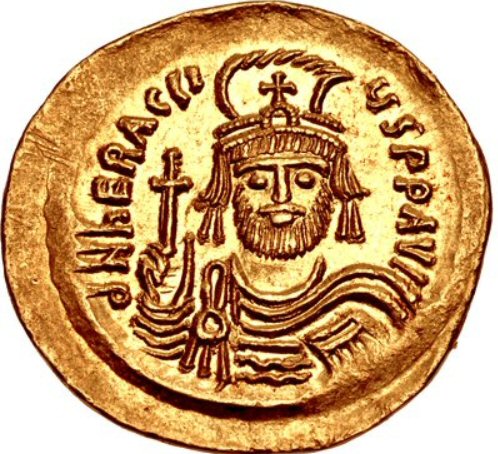The fourth century witnessed the split of the Roman Empire into two distinct empires: the Eastern Roman Empire (later called the Byzantine Empire) and Western Roman Empire, a split reinforced when Constantine I transferred the capital of the Eastern Empire from Nicomedia (in Anatolia) to Byzantium (the city which inspired his imagination in 330 AD to be rebuilt as Nuova Roma (New Rome) ). After Constantine's death, Byzantium had been called Constantinople ('City of Constantine'), until it fell under the Ottoman Empire on May 29, 1453, by then the Turks named it 'Istanbul'. The Byzantine Empire had an evident character of Greco-Roman civilization. Significantly, when the Byzantines gradually embraced Christianity, during the 5th and 6th centuries, their culture acquired a noticeably distinct character, different from their pagan past.

By the 7th century, the empire was channeled into another direction under the rule of Emperor Heraclius, when Greek was made the official language of the empire and improvements were made within the military. When its links with the old Greco-Roman world scattered, the Byzantine Empire finally started to acquire an 'Oriental' style, a style considerably strengthened by the 15th century, after the fall of Constantinople under the Ottoman Turks in the wake of a long state of deterioration that had struck the Byzantine Empire in the 12th century. Even when struck with recurrent setbacks, the Byzantine Empire eagerly preserved its economic, cultural and military position inside the continent through providing a military shield against early Muslim expansion; supplying the Mediterranean area with gold currencies; and imposing its influence on the political systems, laws , and customs of Europe, an influence which further spread into North Africa and the Near East for much of the Middle Ages.
What further brought the Egyptian Romans into isolation from Rome's culture and hastened the dissemination of Christianity was the fall of the Western Roman Empire in the 5th century. When Christianity propagated in Egypt, the Egyptian Pharaonic culture began to fade away: no-one could read the hieroglyphics since priests no longer functioned at the temples (which were either transferred into churches or abandoned to the desert).
Being the second city of the empire, Alexandria was fraught with religious controversies and rife with rifts. In response to the massacre of many Christians the Jews alleged, Cyril (the Patriarch of Alexandria) urged the city's governor to deport the Jews from Alexandria in 415. Nevertheless, Egypt continued to supply the Empire and the Mediterranean region as a whole with much of its agricultural production and manufacturing prerequisites continuing to be an important center of scholarship.
Religious controversies between the Egyptian Church and the Byzantine Empire sparked over the nature of Jesus, more specifically, whether he had two natures, human and divine, or merely one. Called for by Constantine I, the First Council of Nicaea was held in Nicaea (in Bithynia) in 325 AD and resulted in the first uniform Christian doctrine, called the 'Nicene Creed' which aimed at resolving debates within the Church of Alexandria over the nature of Jesus so as to define unity of beliefs for the whole of Christendom. While St.
Alexander of Alexandria and Athanasius took the position that Jesus was of the same substance as God the Father, the popular presbyter Arius took the position that Jesus was merely of similar substance – and the council's decision was against the latter. Since the Council of Nicaea failed to clarify the divinity of Jesus, in 381, Theodosius I called for the First Council of Constantinople. Being held in the Church of Hagia Irene from May to July 381, the council tackled numerous questions: it denounced Arianism and expanded the third article of the creed (which dealt with the Holy Spirit) in the so-called ' the Nicene Creed of 381'. Significantly, it was set that Jesus is of the same being (Ousia) as God the Father. It is worth noting that because Pope Damasus I was not called into the council (or rather refused to be present), this council is sometimes named the 'Unecumenical Council', nevertheless, it was considered ecumenical at the Council of Chalcedon in 451.
The Council of Chalcedon is considered to be the Fourth Ecumenical Council held from 8 October to 1 November. It condemned the idea that the nature of Jesus amounted to nothing, disregarding the findings of 449. As a consequence, the Chalcedonian Creed provided a description of the "full humanity and full divinity" of Jesus. Although the Roman Catholic and Eastern Orthodox Churches (then one church) recognize this council as faultless in its doctrinal definitions, it arose a major schism. That is, those who abstained from accepting its teachings (who are now known as Oriental Orthodoxy) were accused of Monophysitism (believing that Jesus has two natures in one nature called, the "Incarnate Logos of God"). However, the stream of the Monophysite thought continued to take both Egypt and Syria as its center and the opposition of the Orthodox perception was orderly repressed in the 570s.
